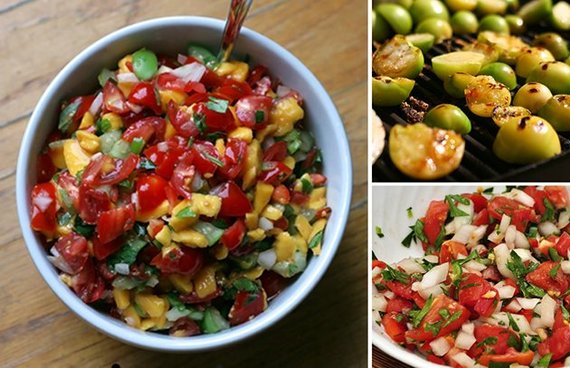Photo (clockwise from left): Grilled Tomatillos by Taz; Pico de Gallo by jeffreyw; Mango Salsa by Maggie Hoffman
Born in pre-Colombian Mexico, this ancient condiment uses every flavor blaster in the New World arsenal—chilies, tomatoes, alliums, citrus, even squash seeds. And if you think salsa comes solely tomato red or tomatillo green, you haven't experienced melon, papaya, or pineapple salsa. You should.
Salsa is quick and easy to make -- indeed its essence is its spontaneity. Big in flavor, but low in sugar, fat, and calories, it just might qualify as health food.
Here -- just in time for Cinco de Mayo, Mexico's Independence Day -- are my favorite tips for making the best salsa possible.
- Because of its simplicity and directness, salsa lives or dies by the quality of the raw materials. Start with ripe unrefrigerated tomatoes -- preferably from your garden or local farm stand tomatoes. Sweet onion. Fresh cilantro. You get the idea.
SIGN UP for Steven Raichlen's UP IN SMOKE newsletter to learn more about barbecue!
Steven Raichlen is the author of the Barbecue! Bible cookbook series and the host of Primal Grill on PBS. His web site is www.barbecuebible.com.
